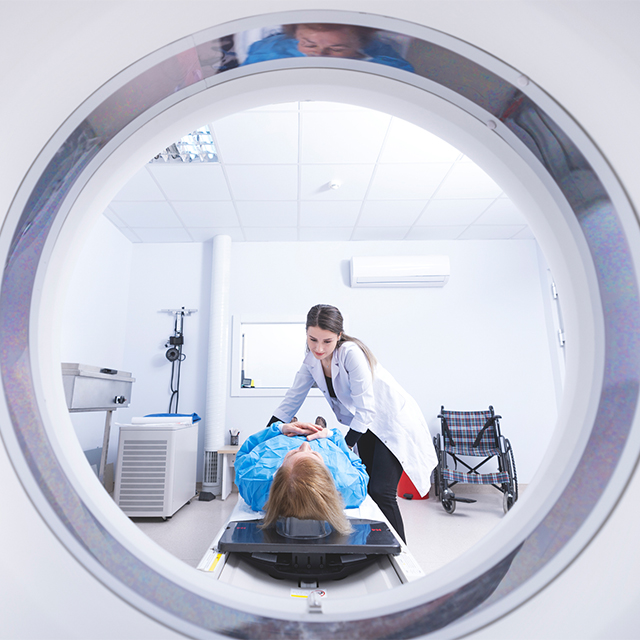A surgical procedure might help if antiepileptic medications aren’t successful or if medication side-effects are bothersome.
One-third of people with epilepsy will have difficulty finding a medication that works to prevent their seizures, according to the Epilepsy Foundation. That means their epilepsy is drug-resistant. Others may experience undesirable side effects from meds and wish to find an alternative solution.
An article in the journal JAMA reports that 34 to 74 percent of people were seizure-free after being treated surgically for medically refractory seizures.
“The jump to surgery is not as big of a leap as it used to be,” said Dr. Dario Englot, the neurosurgical director of epilepsy for Vanderbilt Health. “We now have a spectrum of many different procedures to both diagnose and treat epilepsy, including minimally invasive options.”
An epilepsy specialist will be able to determine the procedures that are best suited for you. Here, Englot provides a rundown of brain surgery for epilepsy treatments and what they entail.
Surgical interventions for epilepsy
Epileptic seizures result from irregular activity of brain cells called neurons. The type of surgery needed depends on the location of the neurons that start the seizure and the age of the person having the surgery. Types of surgery include:
- Craniotomy is the most common procedure for epilepsy. During a craniotomy, a surgeon temporarily removes a large piece of the skull to access the brain. A craniotomy can be used to perform focal resection, which is the surgical removal of a lesion that may be causing seizures. During this procedure, the surgeon examines the exposed brain, records EEG activity, and then removes the portion of the brain that’s causing seizures. This large procedure requires a several-day hospital stay followed by about a month-long recovery. “A craniotomy is still a good option, and the procedure still has a very high success rate,” Englot said.
- Corpus callosotomy is surgery to completely or partially remove the corpus callosum, the part of the brain that connects nerves on the right and left sides of the brain. It is typically used for children who experience irregular brain activity that spreads from one side of the brain to the other.
- Hemispherectomy is a procedure to remove one side of the brain and is generally done only in children who experience seizures that originate from multiple sites in one hemisphere.
- Functional hemispherectomy removes the connecting nerves without removing actual pieces of the brain. It is primarily used in children.
New diagnostic procedures
New diagnostic technologies have made pinpointing the origin of seizures possible with a minimally invasive procedure.
In about half of patients, a care team can determine the origin of seizures through imaging and encephalography, commonly referred to as an EEG, which involves placing electrodes on the scalp. No invasive procedure is required.
In the other subset of patients, however, diagnosing requires placing electrodes internally. With stereotactic electroencephalography, the surgeon makes very small incisions in the scalp followed by small holes in the skull to slide electrodes into the brain.
“Now, once we know where the seizures are coming from,” Englot said, “other new treatment options center around two major categories.” One is ablation, and the other is brain stimulation.
- Ablation destroys the area of the brain where seizures originate. In a stereotactic laser ablation, the surgeon inserts a laser probe through a small hole in the skull while the patient is under general anesthesia. With heat, the laser probe then destroys the area that causes the seizures. The surgeon watches the process in real time via an MRI scanner. “We can make sure we’re treating the right area,” Englot said. “And we can make sure that we’re not damaging any other areas near it.”
- Brain stimulation techniques can help reduce or stop seizures without the need to resect, remove or ablate any part of the brain. “The reason that this is important,” Englot said, “is that sometimes seizures come from an area of the brain that would not be safe to remove, such as an area that’s important for movement or speech.” The two current FDA-approved brain stimulation techniques are responsive neurostimulation and deep brain stimulation.
- Responsive neurostimulation can be thought of as like a “pacemaker for the brain,” Englot said. The surgeon places electrodes into the areas causing seizures and permanently implants a small device that constantly records brain activity. “When that area is about to produce a seizure, it gives an electrical stimulation that the patient is unaware of and doesn’t cause side effects, and it prevents that seizure from happening,” he said. This procedure takes time to work while the device becomes more intuitive. Although this treatment doesn’t cure epilepsy, it can significantly reduce the number of seizures a patient experiences, Englot added.
- Deep brain stimulation doesn’t require knowledge of exactly what part of the brain is producing seizures. It’s also an option for patients who have seizures coming from multiple places, Englot said. The electrodes are placed in the thalamus and constantly stimulate it. “That’s an area of the brain that connects to almost all other areas of the brain,” Englot explained.
Vagus nerve stimulation
An additional procedure that doesn’t require brain surgery is vagus nerve stimulation. In this procedure, a surgeon will implant an electrode into the patient’s neck at the vagus nerve, a nerve that connects to the brain. A pacemaker-like device is then implanted into the chest and connected to the electrode. “Stimulating that nerve decreases seizures in many patients,” Englot said. “This is something that’s been around for about 20 years, and it’s an option even earlier in the process because you don’t really need to know where the seizures are coming from.”
Find more information from the experts
My Vanderbilt Health provides information on a variety of health, wellness, family, and food topics. Visit our blog to see what information you can find to turn your life or a loved one’s life around.

Personalized care for epilepsy
The Vanderbilt Epilepsy Center evaluates and cares for adult and pediatric patients who are experiencing a range of symptoms — from mild seizures to more complex epilepsy disorders.




